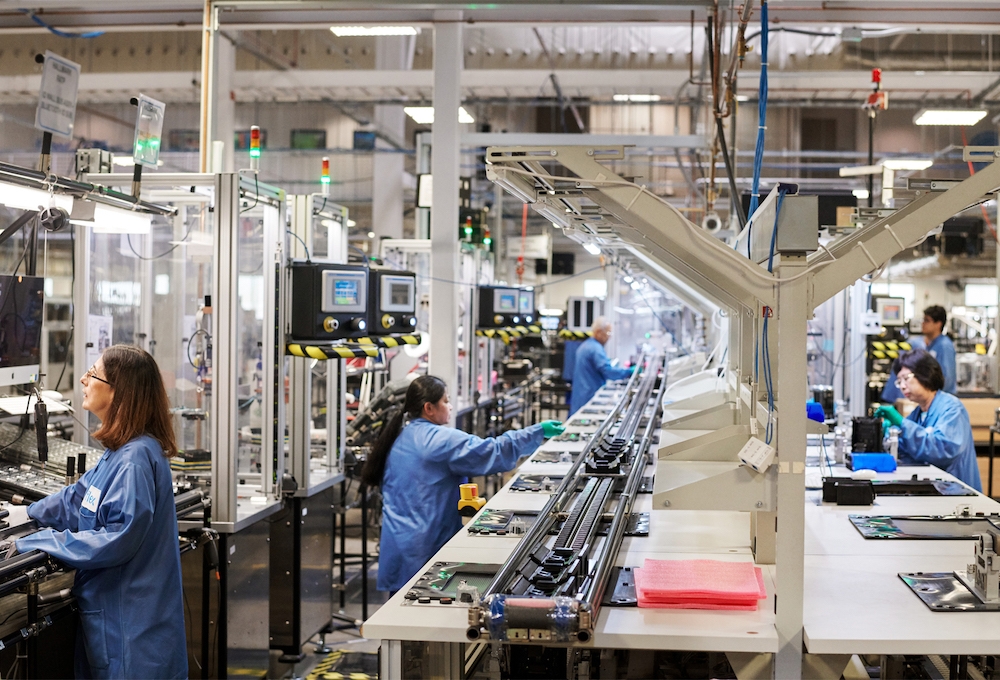Apple’s supply chain is building resilience at every point

Made in the U.S.A.
The horsemen of war in Ukraine, tension with China and the pandemic continue to generate huge shifts across most enterprises supply manufacturing and logistics chains, and Apple’s response probably speaks volumes for the future of non-remote work.
Industry for the rest of us
Over the years both Apple CEO’s Tim Cook and Steve Jobs have given a stable response when asked why Apple didn’t make hardware in the US anymore.
The problem is that the US lacks the huge number of workers skilled enough to run those factories, and staff want more money to work in them. You may think Apple’s products are expensive today, but they’d be even more so if completely made in the USA.
Apple’s answer doesn’t seem to have changed – most of its production will remain outside the US — but its approach is transforming. Some manufacturing will remain in its hugely important Chinese market, while products destined to be sold elsewhere will be made outside of China, reflecting the deteriorating political situation.
Under Cook, Apple is strategic
Under Cook, Apple is highly strategic, and if it is learning one thing from the changing situation in China it is the need to put eggs in multiple baskets. We think we know that Apple is on a rapid plan to create a kind of dual manufacturing setup.
We know Apple and its manufacturing partners are looking to set up shop outside China. The Apple Watch 8 box I’m looking at tells us that product was made in Vietnam. Manufacturing partners are opening facilities in India, Thailand, Korea. It is even building a logistical hub in Saudi Arabia.
The latter likely to act as a kind of centrally spaced warehouse for transit between India, Europe and elsewhere. Apple will still cling to its time-conscious business models and will seek to develop a new supply chain infrastructure that enables it to achieve that, moving forward.
So, for example, product and component distribution hubs will likely be put in place globally so that if one hub becomes unavailable others in the network can fill the gap. Consumers purchasing an Apple product can continue to expect a fast turnaround as a result, despite the whole chain becoming more complex.
More than product, also components
Apple CEO, Tim Cook, himself a talented operations leader, recognizes this and commented at an internal meeting (as reported by Bloomberg) that 60% of the world’s processor supply comes from Taiwan.
“Regardless of what you may feel and think, 60% coming out of anywhere is probably not a strategic position,” he said.
Cook confirmed Apple and TSMC will begin manufacturing processors at a factory in Arizona starting in 2024, with production scheduled to reach 20,000 units each month.
While Bloomberg says TSMC has said these will be 5nm chips, given the factory still needs to be built the production line could change to 3nm, if they ship. Cook also hinted at plans to begin chip manufacture in Europe.
TSMC is reportedly also pondering a second US factory, exploiting the opportunity of the CHIPS act (Chips and Science Act, in which the US is providing $50 billion to incentivize production of strategic assets such as chips).
Toward the diversification of everything
It seems to be that Apple will diversify production across a range of developing nations, including India, while bringing manufacture of some of its most complex components into developed economies, principally the US and Europe.
After all, in terms of costs, it’s going to be a great deal less expensive to carry the small components to the most appropriate manufacturing facility at any time and then export them out than to suffer the misery of lost production in the event of additional crises and disasters.
Apple is transforming itself across the company.
It seems logical, therefore, to suggest most other companies should explore ways in which to reinvent their existing business models in the same way to develop additional business resilience.
Signing off, analyst Ming-Chi Kuo has previously predicted Apple’s plan is on a 3-5 year turnaround, but it probably betrays the severity of the problems we face that the rate at which Apple supply chain news has recently been emerging suggests faster progress in this attempt.
Please follow me on Mastodon, Twitter, or join me in the AppleHolic’s bar & grill and Apple Discussions groups on MeWe.




